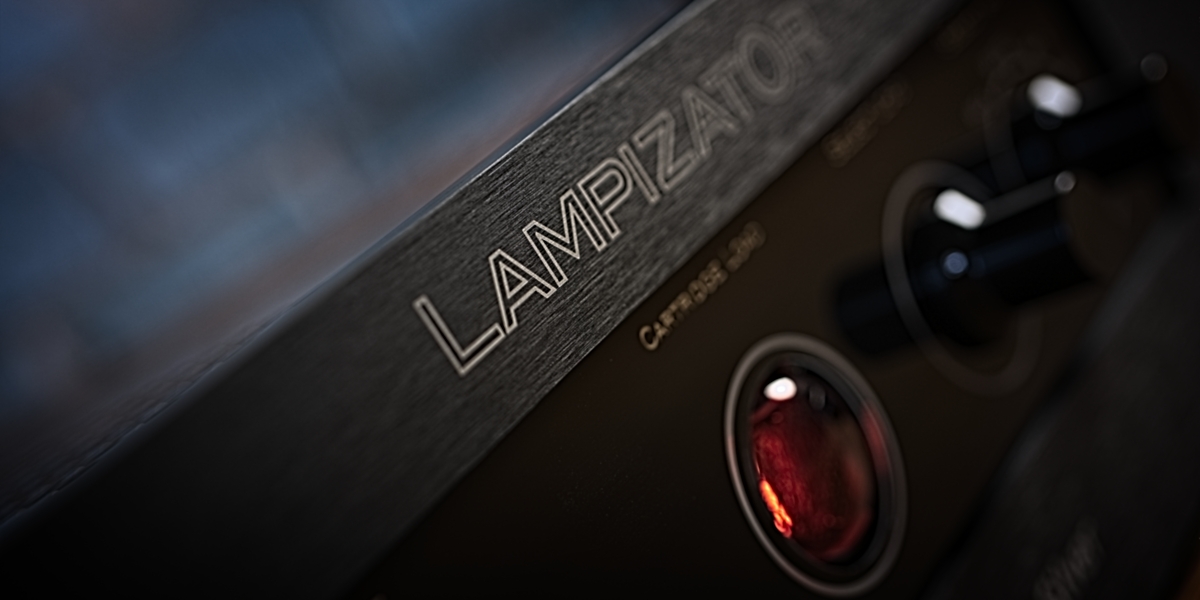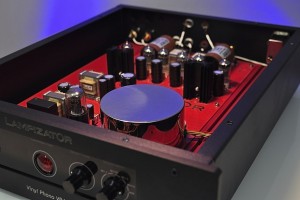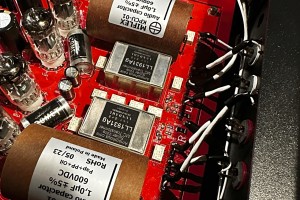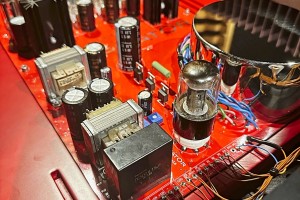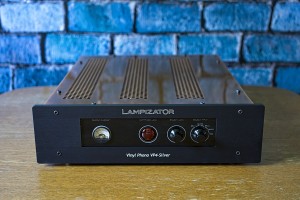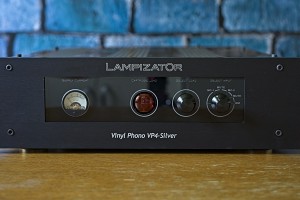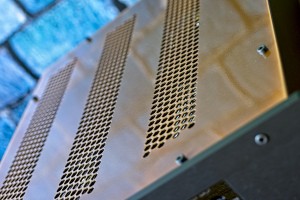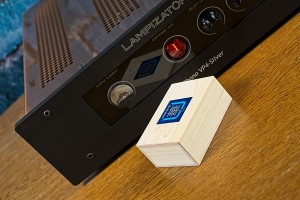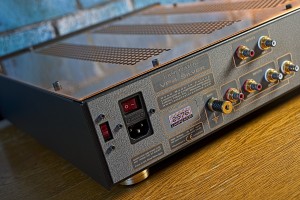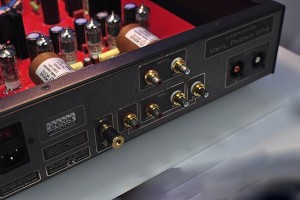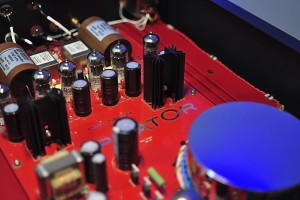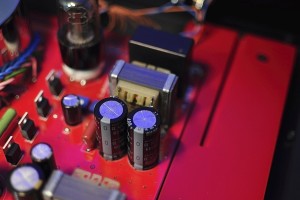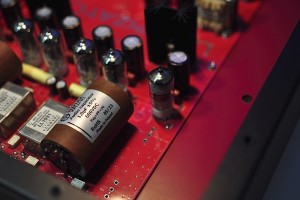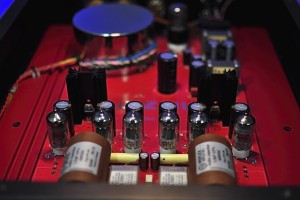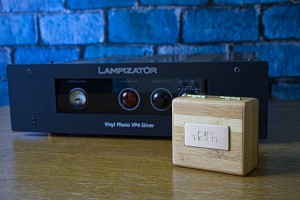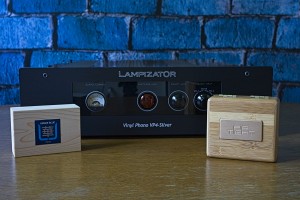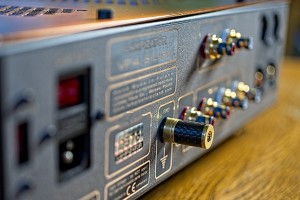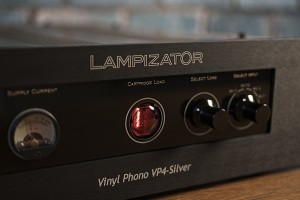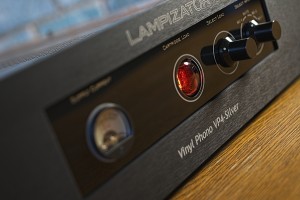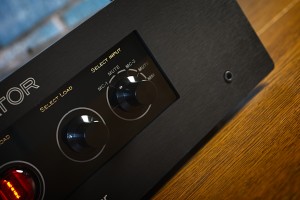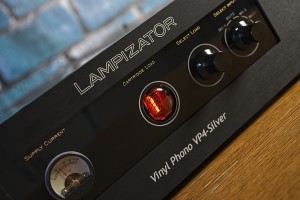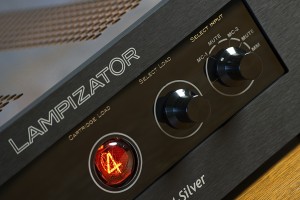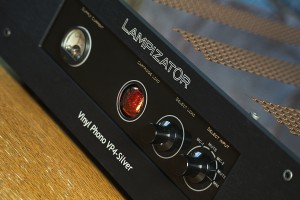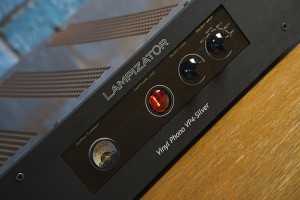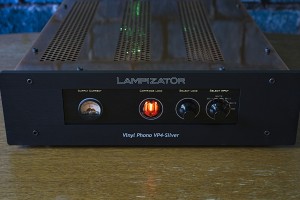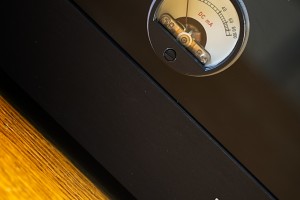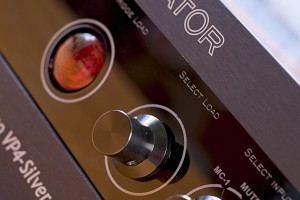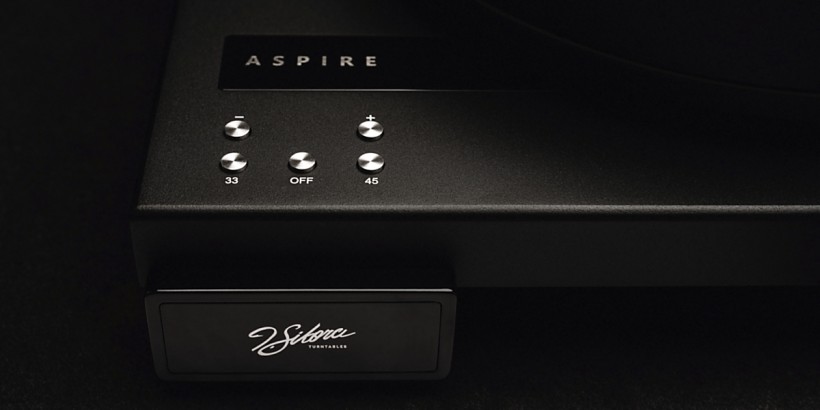Three and half years ago I wrote a review of the first-ever LampizatOr Phono Stage, Vinyl Phono MC1. Now it’s time to follow up on the progress Łukasz Fikus and his team made and check out the latest, and top model for vinyl enthusiasts, LampizatOr VP4 Silver.
Introduction
Before you start reading the review you may want, unless you already did it, to read the interview with Lukasz Fikus and Andrzej Hutnik, the men behind LampizatOr VP4 Silver. You can find it HERE.
There is this old joke often repeated in certain circles of the audiophile community saying, that all of us will eventually ‘mature’ or ‘wise up’ or ‘get old enough’ (depending on who you ask) to convert to tubes and vinyl records. I hope that those who haven’t (yet…) won’t take the joke as an offense (it is not meant to do so). Funny enough, there seems to be quite a large grain of truth to it as with age more and more people I know and read about turn to these „good old” ways of listening to music. Łukasz Fikus has always been known as the ‘tube’ but at the same time ‘digital’ guy. He started in the audio business a long time ago by tuning and upgrading CD Players and such. What he usually did to improve the sound of such a device consisted of adding tubes to the circuit or rather an entire tube output stage. I know some people who used his services back then to upgrade their digital sources – they loved the results of his work.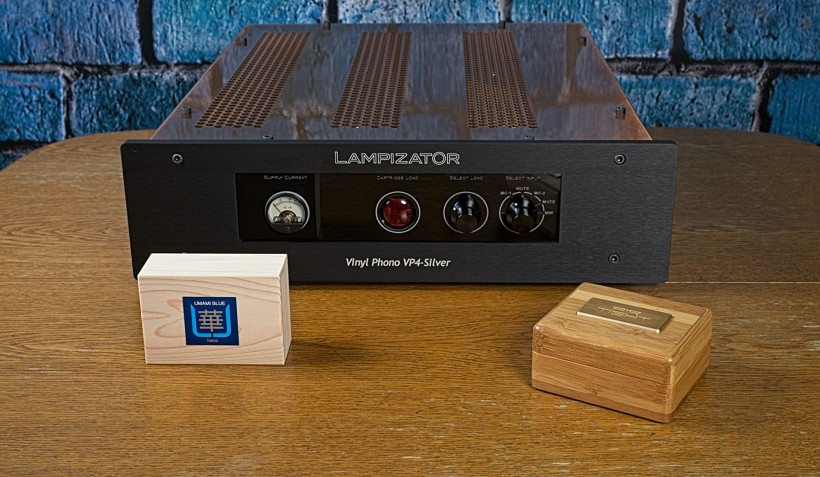
Later came his digital-to-analog converters, today already well-known around the globe, and counted by many (yours truly included) among the best available on the market today. And yet, even though these are ‘digital’ devices, supporting not only hi-res PCM files but also DSD format (which is sort of their specialty, in my opinion), their distinctive feature from the start has been the combination of the best digital solutions with charm and advantages of tubes. Apart from the high or even top level of performance (depending on the model) of LampizatOr DACs, using tubes offers yet another advantage – an option so loved by tube fans – namely tube rolling. I believe it was a huge factor in LampizatOr’s worldwide success.
I remember talking to Łukasz years ago and asking him why he did what he did, meaning started developing D/A converters instead of amplifiers or loudspeakers. He told me, as a sort of a joke, that audio components can get heavy hence the choice. As you most likely know, not only LampizatOr DACs did get pretty heavy but also, our designer and his team didn’t stop at this one particular type of device. Today, in the brand’s lineup you will find amplifiers (heavy!), speakers (a separate brand Fikus Electric, even heavier), a server (pretty heavy), cables, and even a power conditioner (quite heavy as well). In other words, he didn’t follow his original plans… The biggest surprise of them all over the years of progress and lineup’s development, and that’s how we circle back to the anecdote, was when in 2019, LampizatOr presented… a phono stage.
Did Łukasz Fikus ‘mature’, or ‘grow up’ (surely not ‘get old’ :)) to vinyl records? I don’t know about that, but I do know that his fascination with vinyl records started a while ago, and I do know that he likes a challenge. A combination of the two, that’s my guess, sparked the development process, and its first fruit was Vinyl Phono MC1 (you can find my review HERE). Yes, it was a tube phonostage, yes it looked similar to LampizatOr DACs in many ways (and was as big and heavy as them), and yes it was good, really good, if still not perfect. Remember though, that rarely the first product of a new type is the best any manufacturer makes. The development process, and the feedback from users and reviewers, allow manufacturers to gather knowledge and experience and provide a lot of information that can be used to create even better new generations of products.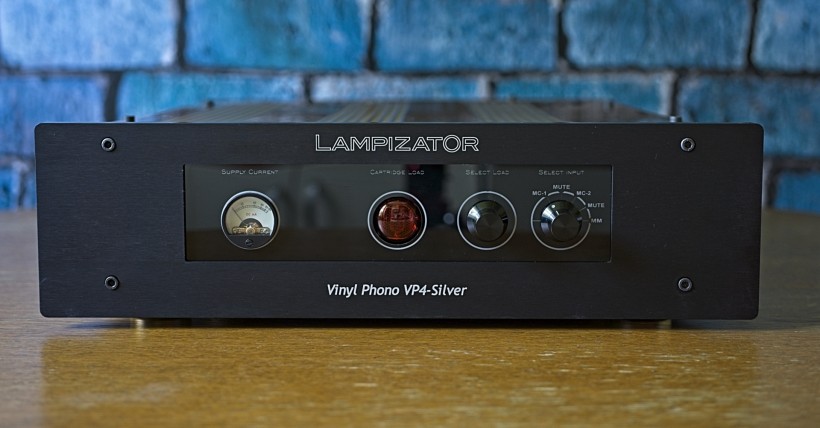
To be honest, I haven’t followed that closely the development of LampizatOr phonostages over the past few years, you know, with Covid-19 and all that, so I wasn’t quite aware at which level they’ve already arrived. The idea for this review was sparked by a conversation with our another famous audio vinyl-related designer, Janusz Sikora of JSikora turntables and tonearms. The two companies have been cooperating for a while now. You will find LampizatOr phonostage in JSikora’s showroom, and JSikora’s turntable in LampizatOr’s. And so, it was Janusz who told me that Łukasz Fikus’ latest creation, the Vinyl Phono VP4 Silver surprised him with its excellent performance and the fact that it offered significant progress compared to the previous version. I know Janusz Sikora well enough to realize that he doesn’t get excited that easily, so the way he acted, and how impressed he was suggested that LampizatOr developed another true gem. So I called Łukasz Fikus, and several weeks later a review unit was ready for me.
Design and features
LampizatOr VP4 Silver is a phono stage supporting both, Moving Magnet (MM) and Moving Coil (MC) cartridges. It is a one-box solution featuring both, a power supply section (tube rectified) and SUT (Step Up Transformer) inside one, quite large chassis. It offers three inputs, one for MM and two for MC pickups. Fans of external SUTs (Step Up Transformer) can use one with the MM input, also because, as the designer emphasized, it was designed with the same level of attention as the MC inputs and it offers the same level of performance. As you may have already read in an interview with Łukasz, there is a reason why both (top) DACs and phonostages are so big and heavy. Keep that in mind when ordering LampizatOr VP4 Silver phonostage as you have to prepare proper space for it, one that will accommodate 430 by 510 by 130 mm (W x D x H), and weigh 19 kg (with copper top panel) beast. I was reminded about this key piece of information when my excellent Rogoz Audio rack (that hosts the J.Sikora turntable, my phonostages, and ArtAudio 300B SET) turned out not big enough for VP4 Silver, so I had to put it on a separate Alpine-line rack.
As I’ve already mentioned before, the look of the VP4 hasn’t changed that much compared to Vinyl Phono MC1 that I reviewed a few years back – no reason to change something that worked. This time, the thick aluminum front is available only in black and one of the external features differentiating the Silver version from the regular one is a copper top. The front features a large cut-out with black (my guess – acrylic) insert that hosts a VU-meter, a Nixie tube, and two knobs. One of the latter is an input selector with five positions as between the three inputs there is always a „mute” position. The other knob allows users to choose optimal loading for their cartridge – a solution way easier and more convenient and faster to use (which is important when you’re trying to find the right one) than any dip switches usually placed on the back or the bottom of the device. As Łukasz Fikus told me, when ordering the VP4 Silver one may choose all the five (that’s how many are available) values of said loading. Before there were four „standard” ones and one that could be customized. Plus, for the MM cartridges, there is a standard loading of 47 kΩ selected automatically. The eye-catching Nixie tube displays the number of the respective loading.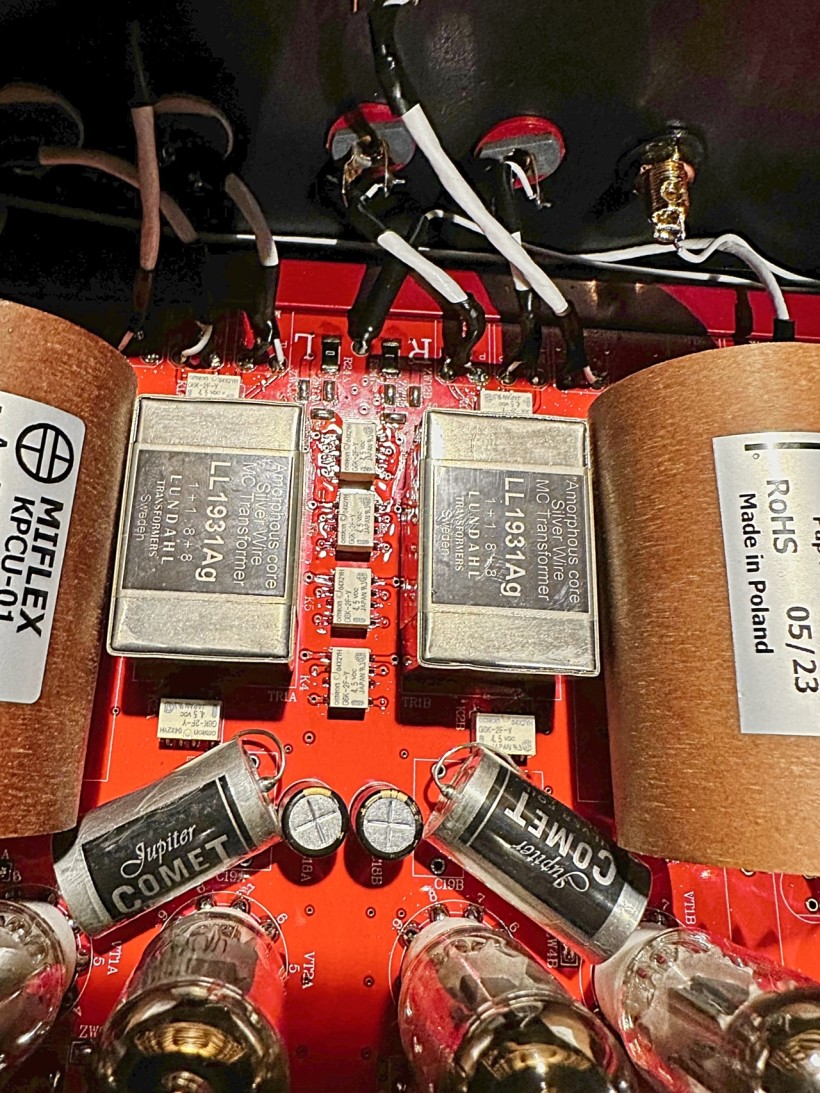
The rear panel features high-quality RCA WBT nextgen input (the upper one is for MM) and output sockets, a grounding terminal, an IEC power inlet, and the main switch. There are also cutouts for XLR output sockets that are used for the balanced version of the device. The whole chassis rests on four anti-vibration, nice-looking metal feet. One of the key assumptions for all LampizatOr phono stage designs was using only tube input and output stages and no negative feedback in the circuit. The tubes complement includes 4 x 6N2P-B, 4X 6N2P, 2x 6N6P, and 1X6X5 tube rectifier. All the tubes operate inside the VP4 Silver chassis. The differences compared to the non-silver VP4 version include the carefully selected, silver SUT, silver wiring inside, and a number of carefully selected top-quality components that, as the gentlemen told me during our conversation, simply put, worked better or resulted in a better performance when combined with the silver SUT and wiring than with previously used copper ones. As they also told me, without getting into details, some capacitors used in this design are custom-made by a renowned manufacturer. Ultimately, what you get is a solid, well-made, nice-looking device offering a 70 dB gain that will be sufficient for any cartridge.
Sound
It so happened, that at the time I tested Vinyl Phono VP4 Silver I also had three excellent cartridges at my disposal. First and foremost, there was my own trusted Air Tight PC-3 that had been my partner in vinyl adventures for years. The next one was Phasemation PP-500 which I reviewed for HighFidelity.pl, and the last one was Hana Umami Blue which I reviewed for yet another magazine. None of them belongs to the most expensive and the absolutely best pickups available on the market but they all offer high-end performance and an excellent value for the money (PC-3, now obsolete, did when it was still available). I would say, that most even very demanding music lovers could live with any of them and be really happy about it. I know I would, or actually still am with Air Tight, but I would truly enjoy any of the other two as well. I had a chance to get to know both tested cartridges before using them in this test which made them quite helpful in assessing VP4 Silver’s performance.
The deck used in the test was my other long-time partner-in-crime, JSikora Standard Max now with two arms also developed by Janusz Sikora, KV12 and KV12 Max. The latter hosted Air Tight and the former either Phasemation or Hana during the listening sessions for this review. Both arms feature gold-plated copper wiring sourced from Soyaton. The VP4 Silver was connected to my Circle Labs P300 preamplifier (see the review HERE) using Bastanis Imperial RCA IC (see review HERE), and KBL Sound Zodiac XLR interchangeably with Next Level Tech Flame XLR (see the review HERE) forwarded the signal to Circle Labs M200 power amp. The last link in the setup was GrandiNote MACH4 speakers fed by the amp using Soyaton Benchmark speaker cables (see the review HERE). My two phonostage references haven’t changed for years and are the excellent ESE Lab Niburu V5.0 (see review HERE) and GrandiNote Celio mk IV (review of the latter HERE), both solid-state designs.
Now, after 3,5 years it’s not easy to remember the sound of one of the dozens if not hundreds of reviewed components in detail even if they left a very good impression, which the first LampizatOr phonostage did. So I read my own review to refresh my memory, which helped a bit. I had to also consider the fact, that some other changes happened in my system in the meantime, so it was even harder to compare the two LampizatOr phonostages directly (but I did my best anyway). And yet… one of the first things that popped into my mind was: there are more sparks in this sound, it seems even more open, pure, and airy in the upper end than I remember the original one to be. In the review of the latter, I wrote, that in terms of general sonic character, it was more like my GrandiNote phono than Nibiru, or in other words, it offered a richer, more saturated sound. This time, it seemed to me, that LampizatOr VP4 Silver shifted to some degree towards the ESE Lab Nibiru, hence landing more or less in the middle between my two references in terms of general sonic character.
What definitely hasn’t changed, was the coherence of the presentation, and the smooth, natural flow of music. If anything, it got even better! The ‘gain’ in the upper part of the range, which I would (no surprise here) attribute to the ‘Silver’ element of the design, didn’t disturb the proper balance of the presentation as a whole as the lower end seemed properly developed as well. The midrange had this ‘tube’ magic, or richness, or velvetiness, and naturalness to it. The center of gravity might have been shifted up just a notch, and to be clear, without a direct comparison, I can’t even be sure it actually did, but it sounded as natural and accurate as with many top phonostages I tested. What changed most, I believe, was crispier, a bit more aggressive (when needed, which makes it more natural, and more realistic), and vibrant upper tones that added the aforementioned highly appreciated sparks to the music presentation.
Due to that change, and in my opinion, it is a clear change for the better, trumpets, for example, seemed even more accurate, more live-like, more aggressive, and hence more natural. Yet, at the same time, say, on Billie Holiday’s „Body and Sound” (played from a recent GN Records limited edition), while the trumpet was so accurately crisp, even sharp, Billie’s voice was beautifully rich, smooth, deep, textured, and so emotionally engaging, that it was clear that the improvement in treble didn’t have any negative impact on the excellent ‘tube’, in the best sense of this word, midrange LampizatOr delivered. It just complemented it making the whole more exciting, more real.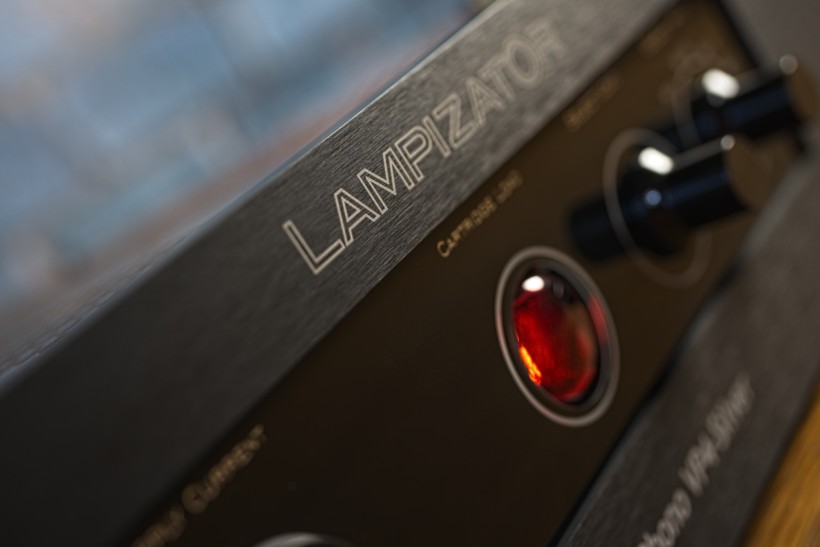
The next album, again released by GN Records, Ensemble Operarmonica’s „Carillon”, beautifully showcased the VP4 Silver’s ability to reproduce the ambiance of the recording, in this case of a large church with a lot of reverb. This aspect of the presentation was the key to building a huge space in front of me, one with incredible depth that felt as if I really sat in a large church, not in my room. On the other hand, the tested phonostage used church organs’ sound to prove it was fully capable of delivering powerful performance with well-extended, truly deep, and when needed even thunderous lowest notes. Both the flute and soprano complemented the presentation constantly reminding me of how good, how natural, and rich the midrange with this phonostage is. The abundance of tiny details, and the excellent micro-dynamics, clearly delivered even the tiniest tonal shifts, all that enriched the performance making it even more natural sounding, and highly enjoyable.
I continued my acoustic adventure with the famous Keith Jarret’s „Koeln Concert”. I own two solid-state phonostages and many of the top devices of this kind I tested were transistor-based too. Yet, this particular album always, always (!) sounds absolutely best with (top) tube phonos. Such as the LampizatOr VP4 Silver. Whenever someone asks me what is so special about tubes I suggest they listen to recordings such as this one using tube phonostage/DAC/amplifier. The timbre of the piano, the depth of its sound, the silky smooth flow of music as if it was played in front of me, and not recorded, processed, and so on, dozens of years ago – it is just naturally there. The musician’s murmuring, feet tapping, the palpability of the performance, the ambiance, the noises from the audience – all these elements combine into an incredibly smooth, yet powerful, amazingly immersive, brilliant, unforgettable performance.
At least they did with the tested LampizatOr, as they also had with Kondo, Audio Tekne, Brinkmann, or with (hybrid) Tenor Audio before. Such a session becomes so much more than just listening to the recorded music. It becomes a deep, personal experience that could be topped only by participating in the recorded event. Which, until they develop a time machine, isn’t possible, so the recording of the „Koeln Concert” has to do. VP4 Silver did the trick and I sat there mesmerized listening to the whole album, actually several times over the course of my time with it.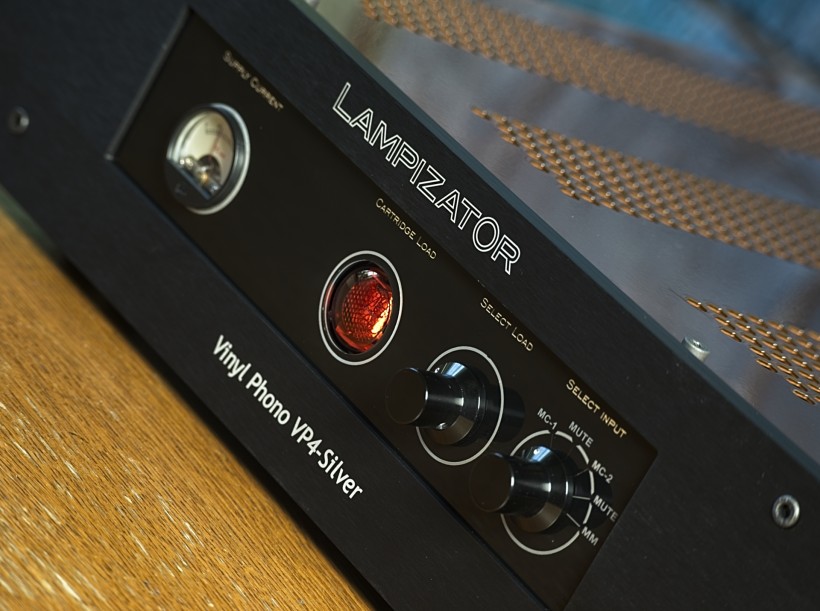
Another one of my favorite albums is „Flamenco puro live”. It is yet another excellent recording and release (by Decca) of a stunning performance. Those who know it may be afraid that with a tube phonostage, such as LampizatOr VP4 Silver, there is not enough fire and passion to it. Fear not! There was enough passion in the singer’s voice for five albums, let alone one. His voice was powerful, its texture and timbre very natural, and the passion and energy were very convincing. The next equally natural and convincing element was clapping – an almost as important part of flamenco as singing, guitars, and dancing. And always one of the most difficult to present in a natural way, at least on the level that LampizatOr offered. The guitar, or „my” instrument if you will, was presented in a very accurate, convincing, true way too – clear, rich, fast, energetic, vibrant – everything one expects from this instrument in a flamenco master’s hands.
Last but not least, the dancing. Yes, it’s the most visually stunning element of every flamenco show, as well as of this particular sound-only (!) recording too. And it is the most impressive component of this audio (!) recording if you think about it. You can’t see dancers with our eyes, obviously, which makes conveying their performance such a difficult job. Yet, on this album, you can „see” them using your ears and just a little bit of imagination. When the album is so remarkably well-played, that is. The LampizatOr VP4 Silver was very convincing in conveying all these fast, powerful impulses of the shoe tapping. I could ‘see’ the wooden floor being stepped on and responding to it, the dust rising from it and swirling in the air, and the mesmerizing movements of the flamenco dancers.
No matter how heated the events on the stage got, LampizatOr conveyed them in a passionate, energetic, yet orderly fashion. What a performance by both, Paco Pena and His Group, and LampizatOr VP4 Silver it was! It doesn’t get much better than this even if you spend much more on a phonostage or a cartridge feeding it. I can’t prove it, but based on my experience it seems to me that this phonostage would be able to keep up (quality/performance-wise) even with (much, much) more expensive pickups most likely delivering an even more refined sound.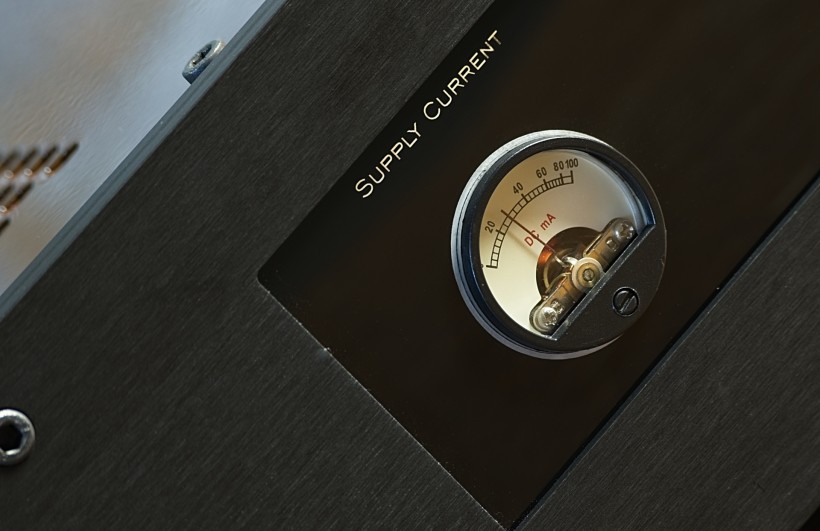
So far, it may seem as if I listened exclusively to acoustic recordings, which I didn’t. I, generally speaking, listen to more acoustic than electric or electronic recordings, and most good tube components play the former in a very special way, VP4 Silver included. Yet, the versatile phonostages and the reviewed model from LampizatOr are definitely one too, delivering on all fronts, no matter what one throws at them. And so I did play, for the first time in quite a long time, the Roy Gaines’ „I Got the T-Bone Walker Blues” (on Groove Note’s release). The key to blues music is true emotions on the performers’ side, and on the system’s playing it an ability to convey them in the most accurate way possible. The other key component is also a great PRAT so that a listener can feel and follow the pace and rhythm, And the music is presented with perfect timing.
Now, PRAT (pace, rhythm, and timing) is a bit tricky. It seems that solid-state devices have an advantage here, but tube ones, the good ones I mean, including VP4 Silver deliver it in a „good” or some may say „good enough” manner. What does it mean? They can’t quite match the best solid-state competitors in terms of speed, and tightness of the lower end, and yet, once the music starts to flow one completely forgets all about it. Because the timing, pace, and rhythm are all still presented in an excellent, convincing way, and what matters, even more, is the incredible, tonally rich, textured midrange covering the vocals and electric guitars.
The emotional layer of this music, which was conveyed in a more convincing, more natural way than any solid-state device I know is able to do, contributed to the overall engaging, almost addictive, perception of the presentation. Obviously, it is a personal choice which aspect of the presentation is more important, but I was completely bought by it! From the ones I clearly remember, only the Tenor Audio Phono 1 with its thunderous, yet perfectly controlled bass delivered this particular album, and some others of this genre, in an even more convincing way. Yet in terms of dynamics, I would say that the advantage of this over 50 kUSD device was minimal.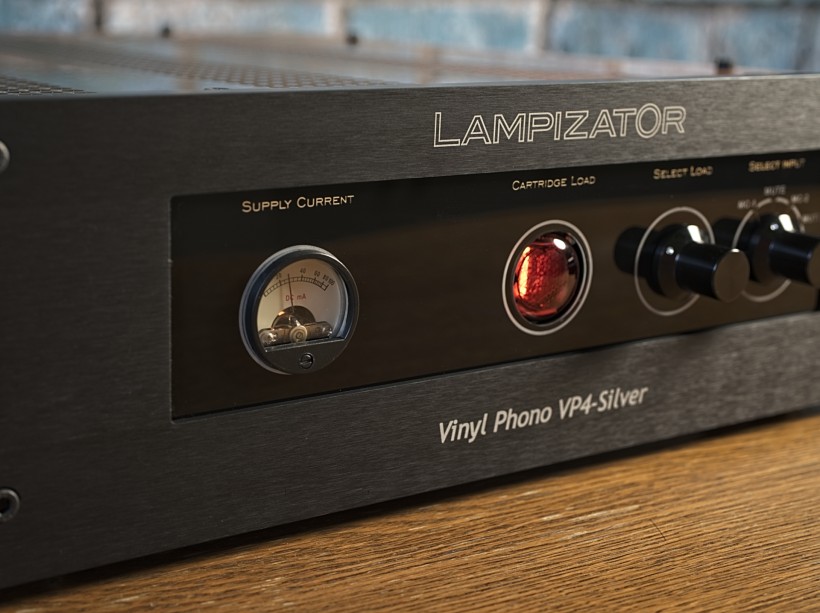
I love the blues, I’ve been to many fantastic concerts and I require a really good (not necessarily perfect, hence „good enough”) PRAT and flawless emotional connection with performers. That’s what LampizatOr VP4 Silver did perfectly when playing this album. It wasn’t the only quality though. The saxophone sounded so smooth, so rich, so deep, so three-dimensional that it seemed present in the room. The trumpet was impressively crisp, open, and aggressive but never beyond the fine line that separates the realistic sound of this instrument and one that makes it unpleasant. In my opinion (!) tube-based devices just do it better, they are more convincing in delivering live-like sound (in terms of presence, palpability, depth of tone, and richness). I had no doubts anymore, that VP4 Silver belonged among the handful of the best phonostages that ever visited my system. It wasn’t the top one, that’s still reserved for the Tenor Audio, but the cheapest among them, and yet I could easily imagine living with it and fully enjoying it every day.
Speaking of versatility. Inspired by the great presentation I participated in several days ago in Munich in the FM Acoustics’ room (although when I was there it was run by Touraj Moghaddamu from Vertere Acoustics, whose turntable was used there) I played a record that had gathered quite a lot of dust on the shelf – Pink Floyd’s live album „Pulse”. First I cued in the side with the fantastic track titled „The Great Gig in the Sky” and then „Money”, but after that experience, I just went to the first side of the first record and listened to all four of them (eight sides). It is not some super-duper audiophile recording but it’s pretty good and the LampizatOr VP4 Silver found a way to prove it and deliver yet another stunning performance.
It was to be expected – after all, it had already proven its proficiency in terms of presenting dense, expressive, resolving, palpable midrange and excellent range extremes. I knew that conveying the ambiance of the event was also within its reach, as was the high energy and dynamics of the performance, and the delivery of all the tiny details buried deep inside the mix. All of the latter were presented with impressive clarity and intensity completing the whole performance. Yet, it was vocals that turned out to be the great attention „attractor” throughout the whole album, and Gilmour’s guitar (obviously!). Whether sung or spoken, vocals often caused goosebumps on my forearms, and there is no greater proof of convincing delivery of a recording than the body reacting to it without us even knowing it.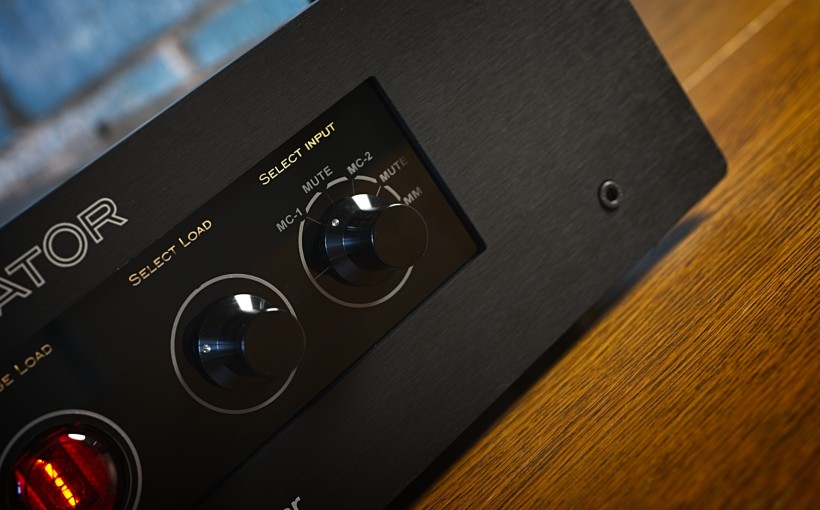
After that experience, I reached for yet another bit dusty favorite live rock concert – an album simply titled „Live” by the Aussie veterans from AC/DC. As with every quality phonostage, VP4 Silver started by making it clear, that recording quality is not a virtue one could attribute to this particular album. And then… it rocked my world, so to speak.  Cause after just several seconds the quality of the recording didn’t matter anymore and the fun began. LampizatOr effortlessly followed the pace, kept the rhythm, and provided this incredible Aussie energy in spades forcing my arms and feet to tap along, my head to rock and spin, and me, to my neighbors’ misery, to sing along. Long story short – I had great fun! This is the whole point of this album and not all tube phonostages can convey in such a convincing, even contagious way as LampizatOr VP4 Silver did.
Cause after just several seconds the quality of the recording didn’t matter anymore and the fun began. LampizatOr effortlessly followed the pace, kept the rhythm, and provided this incredible Aussie energy in spades forcing my arms and feet to tap along, my head to rock and spin, and me, to my neighbors’ misery, to sing along. Long story short – I had great fun! This is the whole point of this album and not all tube phonostages can convey in such a convincing, even contagious way as LampizatOr VP4 Silver did.
Last, but not least, I moved to some of my favorite classical music albums, including operas. One of them was „Carmen” with Leontyne Price on RCA’s Red Seal release, and it just swallowed me whole already at the overture. I know that my combo, deck, tonearm, and cartridge, are actual killers when it comes to dynamics, saturating music with energy, and keeping every element of the presentation in check. The whole point with any phonostage is to keep up with the turntable. Not that many tube devices could do it, but the LampizatOr seemingly effortlessly joined the best of them in doing so.
And so the overture entered with true fire and momentum, and then the familiar story of a beautiful and passionate gypsy and Don Jose developed smoothly and I was so involved in it that the end came surprisingly quickly. The voice of Leontyne Price was as beautiful as ever, deep, powerful, and magnetic. The stage was huge with its furthest end placed seemingly dozens of meters away, and the font spread quite wide as if I sat in one of the first rows in an opera house. Following the singers moving around was as easy as ever due to precision and abundance of details and utilizing all the acoustic cues from the recording by the setup. The orchestra, when allowed, displayed all its power, dynamics, and momentum to an extent that very few phonostages had ever delivered in my room before. And yet, it was Carmen, Don Jose, and other main characters that grabbed my attention with their so emotional, so immersive performances. Long story short, LampizatOr VP4 Silver also when it came to such large-scale, complex performances, did a marvelous job of delivering it in a precise, orderly, energetic, and highly expressive way. Which at this final stage of the review process didn’t come as a surprise anymore. I already knew it was THAT GOOD!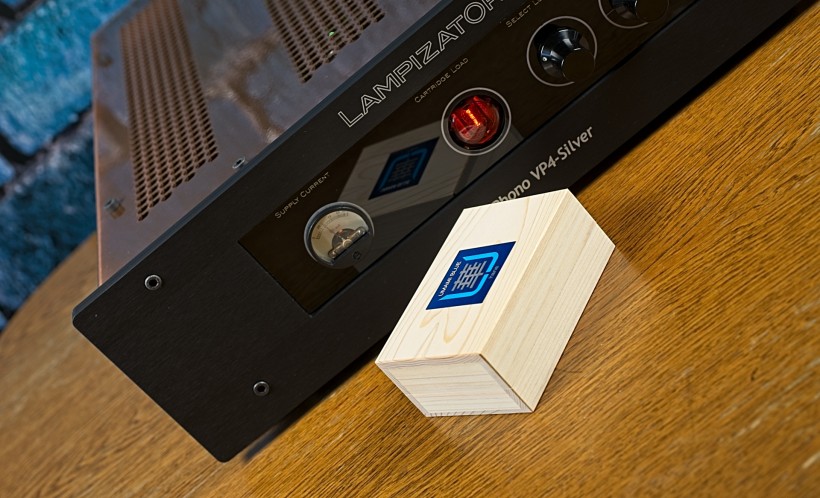
Summary
I’ve been rooting for Polish audio manufacturers for years hoping that their products would reach the ‘world-class’ level. I am truly happy and proud to see more and more of them conquering numerous markets around the world offering excellent, well-made, great-looking, and sounding products. There have been already several interesting phonostages developed in our country by brands such as JSikora, RCM, Closer Acoustics, and Muarah, to name a few, and there are even more in development (for obvious reasons I can’t name names for now). Still, I think LampizatOr VP4 Silver stands out among all those I had a chance to audition as clearly the best of them.
It is a truly high-end device offering a level of performance, refinement, and musicality that only a handful of the best ones I reviewed over the years exceeded. And among those are products of such brands as Tenor Audio, Kondo, Audio Tekne, or Ypsilon, so the names that speak for themselves, from the very top echelon of phonostage, which also cost way more. So yes, that’s the product I would welcome in my system with open arms, and maybe one day I will, thus continuing my quest for a fully Polish high-end setup. The LampizatOr VP4 Silver not only is one of the best phonostages I know, but it is also a worthy partner or alternative for my Pacific 2 DAC as they both offer exquisite performance.
Although… LampizatOr’s price list reveals that yet another, top model is there on the horizon, and yes, its name will be Horizon Phono Silver. You can read more about it in the aforementioned interview with Łukasz Fikus and Andrzej Hutnik that you can find HERE For now though, LampizatOr VP4 Silver is a great contender at 12 kEUR, which is far from being cheap, yet delivering maybe even more than the price suggests. Even if you’re looking for a phonostage that costs 2, 3, or 4 times more you’d be remiss if you didn’t check LampizatOr VP4 Silver out! So don’t miss out!
Even knowing that there is a new flagship coming I can’t resist awarding the current top phonostage from this Polish brand, LampizatOr VP4 Silver, with our award: 
Prices (when reviewed):
- LampizatOr VP4 Silver (single-ended): 12 kEUR
- Lampizator VP4 (single-ended): 8 kEUR
Manufacturer: LAMPIZATOR
Technical specifications (according to the manufacturer):
- Inputs: 3 x RCA (2 x MC, 1 x MM)
- Output: 1 x RCA
- Amplification factor: Total of 3200x, (70 dB)
- Cartridge compatibility: Moving Coil MC and Moving Magnet MM
- Number of input load settings: 5 for MC, 1 for MM input
- Output level on average music material: 2V pp
- Output headroom: 10x
- Power consumption: 60W
- AC mains: 110/115/220/230V AC / 50 – 60Hz
- Tube compliment: 4 x 6N2P-B, 4X6N2P, 2x 6N6P, 1X6X5, 1 x Nixie
- Shelf footprint: 43×51 cm (W x D)
- Total height clearance: 13 cm
- Weight (net/shipping gross): 17 kg / 25 kg (19/27 with copper)
- Power supply: fully linear, 150 watts, fully regulated for every consumption point
- Paid “visual” options: a copper top, spare kit of tubes
Associated equipment:
- Digital source: a custom passive server with WIN10, Roon, Fidelizer Pro 7.10, JCAT NET XE, and JCAT USB XE cards with FERRUM HYPSOS Signature power supply, KECES P8 (mono) linear power supply for the server, JCAT USB Isolator
- D/A Converter: LampizatOr Pacific 2 +Ideon Audio 3R Master Time (USB signal regenerator)
- Analog front end: J.Sikora Standard MAX turntable, J.Sikora KV12 tonearm, J.Sikora KV12 MAX tonearm, AirTight PC-3, phono stages: Grandinote Celio MK IV, ESE Lab Nibiru V 5.
- Power amplifiers: GrandiNote Shinai, Circle Labs M200, Art Audio Symphony II (modified)
- Preamplifier: Circle Labs P300
- Loudspeakers: GrandiNote MACH4, Ubiq Audio Model ONE Duelund Edition.
- Interconnects: Bastanis Imperial x2, Soyaton Benchmark, Hijiri Million, Hijiri HCI-20, TelluriumQ Ultra Black, KBL Sound Zodiac XLR, David Laboga Expression Emerald USB, David Laboga Digital Sound Wave Sapphire Ethernet
- Speaker cables: Soyaton Benchmark
- Power cables: LessLoss DFPC Signature, Gigawatt LC-3
- Power: Gigawatt PF-2 MK2 and Gigawatt PC-3 SE Evo+; a custom power line with Gigawatt LC-Y in-wall cable; Gigawatt G-044 Schuko and Furutech FT-SWS-D (R)
- Network: Silent Angel Bonn N8 + Silent Angel Forester F1 + optical LAN isolator
- Racks: Base VI, Rogoz Audio 3RP3/BBS
- Anti-vibration accessories: ROGOZ-AUDIO SMO40 and CPPB16 platforms and ROGOZ AUDIO BW40MKII feet, Franc Accessories Ceramic Disc Slim Feet and Wood Block Platform, Graphite Audio CIS-35 and IC-35


